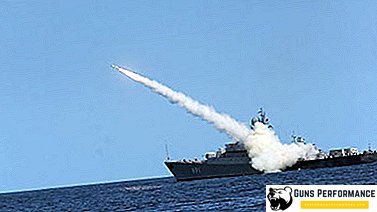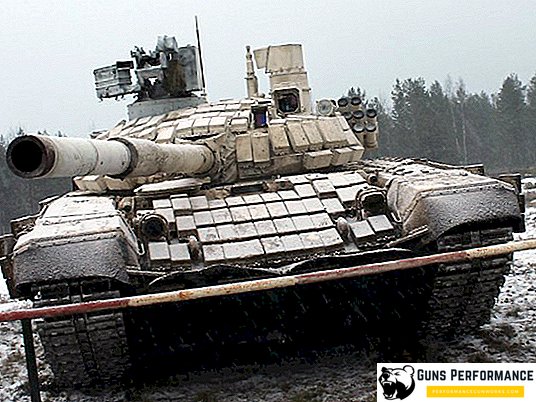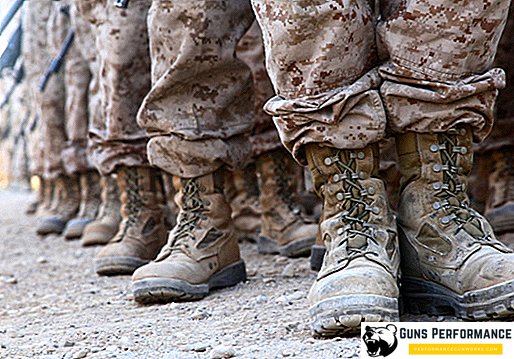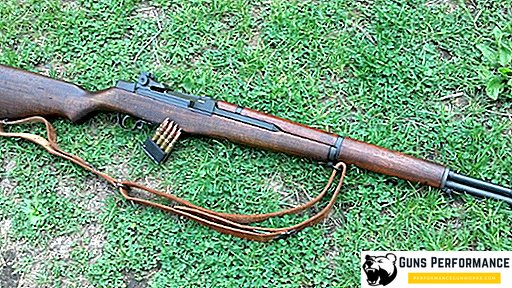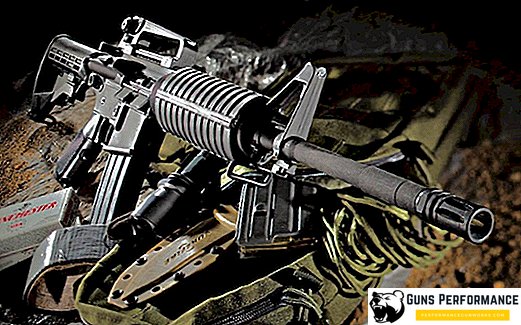
The American M16 assault rifle is one of the most famous and popular automatic weapons in the world. For the color of her forearm and the butt of her nicknamed "black rifle". Currently, the M16 is the main type of small arms of the American infantry, in addition, this rifle is in service with several dozen armies in the world and is second only to the Kalashnikov assault rifle. Since the start of mass production, more than 8 million copies of this weapon have been manufactured.
This automatic rifle has been in service with the US Army for more than fifty years; the Vietnam War has become a real baptism for the M16. It was this conflict that showed the numerous shortcomings of the “black rifle”. The modernization has significantly increased the reliability of these weapons, but the disputes around the M16 do not subside today.
Discussion of the lack of reliability of the American rifle and its shortcomings compared to the Kalashnikov assault rifle is a favorite topic of numerous "sofa patriots", most of whom are not very well versed in the matter. During the operation of the M16, many myths have arisen around it, some of which have little relevance to reality.
The history of the creation and improvement of the M16 is very rich and interesting, it deserves a separate voluminous book. In this article we will try to describe the reasons that prompted the Americans to start developing a new rifle, the history of the creation of the M16 and dispel some of the well-established legends and myths associated with this weapon.

History of creation
American authors most often begin the story of the M16 from the moment of sale to the Colt by ARMALITE of the AR-15 automatic rifle model, along with all the patents and designers who worked on it. However, in reality, the history of these weapons began a little earlier.
In the late 40s, the US Department of Defense initiated work to create new individual protection systems for military personnel. During this project, several million reports on the injury and death of American soldiers during various conflicts (World War I and World War II, the conflict in Korea) were analyzed. Information about the number of injuries, their localization, the causes of injuries and the distances at which they were received was carefully studied.
The researchers came to several paradoxical conclusions: most often (70%) the fighters were injured or killed by shrapnel, the losses from small arms accounted for only 20% of cases. In this case, most of the bullet wounds were received when shooting from 300 meters, most often the soldiers died from bullets fired from a distance of less than 100 meters. At such distances, the accuracy of firing was secondary, much more important was its density.
After studying the results of this study, the US military leadership came to the conclusion that the army needed a new automatic rifle with a low-pulse cartridge of a small caliber, the most effective at distances of 400-600 meters. In 1957, work began on the creation of an automatic rifle for ammunition 22 caliber.
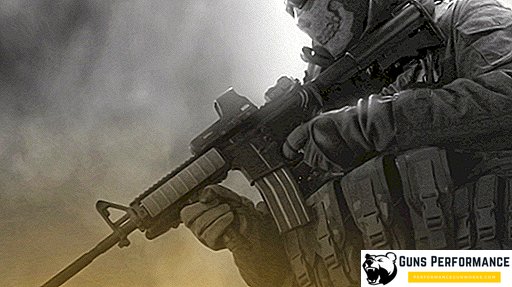
Such weapons have a number of advantages: reducing the size of cartridges and their mass increases the amount of ammunition worn by the fighter, the lower recoil of the ammunition significantly increases the accuracy of shooting (especially automatic), a 5.56 × 45 mm bullet has a better trailing pattern, it is less blown away it has the best damaging effect. In addition, the weight of the weapon itself is significantly reduced.
The military wanted the new rifle to conduct single and automatic fire, had a magazine for twenty rounds and a weight of no more than three kilograms. In addition, she had to pierce an army helmet at a distance of 500 meters. At the same time, specialists from Sierra Bullets and Remington began the development of 5.56 mm ammunition based on existing hunting cartridges.
Several famous US weapons companies took part in the competition. Most of all, the US military liked the AR-15 rifle, presented by Armalite. It was developed by designers Eugene Stoner and James Sullivan on the basis of an AR-10 rifle, designed to look like a 7.62 mm caliber cartridge.
It is curious that when the US military announced a competition for the creation of a new weapon, no one imagined that with this rifle the US Army would enter the twenty-first century. A new lightweight army rifle (LMR - Lightweight Military Rifle) was only supposed to temporarily replace the outdated M14 immediately after its appearance. At the same time in the United States were the development of a new rifle-grenade launcher complex in the framework of the SPIW project, on which serious funds were spent. However, this project ended in failure, which ensured the “black rifle” a long and rich life.
In 1958, the AR-15 was sent for military trials. In its design, this automatic rifle had a number of interesting, but not innovative solutions. These include the "direct" gas outlet, which has already been used in the Lyngman AG42B rifle, the "linear" layout of the weapon with the return spring in the butt (German rifle FG42), a receiver consisting of two halves connected by a transverse pin (Soviet PPSh and PPP, Belgian FN FAL), curtain, closing the window for the release of shells (German StG44).
In the manufacture of AR-15 were used at the time advanced technology borrowed from the aviation industry (casting from aluminum alloys), which significantly reduced the weight of the rifle. The ergonomics of weapons was also at the height, in this respect the AR-15 was a cut above its competitors.
In 1959, the founders of the company Armalite transferred all rights to the AR-15 of the Colt's Patent Firearms Manufacturing Company, and one of the creators of the rifle, Eugene Stoner, also went to work there. It was the "Colt" launched a new weapon in commercial production.

In 1961, the first batch of 8.5 thousand rifles was purchased by the US Department of War for trial operation and sent to Vietnam. The first reviews of the weapons from the combat zone were positive.
In 1963, the company received an order for the supply of 104 thousand rifles for the Air Force and US ground forces. At the same time, the rifle gets the familiar designation - M16. In 1964, it was officially adopted by the American army, and in 1966 it armed all units located in South Vietnam. It was at this point that numerous complaints and complaints began to arrive at the rifle.
During the shooting, the M16 often got stuck, there were a lot of problems with the rifle magazine. The butt in which the return spring was located was not distinguished by proper strength, and when it was destroyed, the weapon completely failed.
The fact is that the design of the M16 largely repeated the device of an AR-10 rifle, designed for a powerful 7.62 mm caliber cartridge. M16 had two friction points sensitive to pollution by powder gases. This was not a problem when the automation used a powerful 7.62 mm caliber cartridge, but the weaker 5.56 mm ammunition coped worse with this task, so the M16 of the first modifications was very sensitive to contamination. To this you can add the severe climate and high humidity of Southeast Asia.
In addition, in the rifle samples taken for testing, the bolt group, the chamber and the barrel were covered with chrome, and in the mass-produced products, to reduce the cost of production, chrome plating was refused, which had a very negative effect on the operation of automation. All this led to clogging of the rifle and frequent sticking of the spent cartridge case in the chamber.
Eugene Stoner suggested using special gunpowder for M16 ammunition, which gives a minimum amount of soot, which partially solved the problem.
The marketing policy of the Colt company was based on the statement that the M16 does not need to be cleaned and disassembled at all. So, initially, the US Army did not purchase weapons cleaning kits for this rifle. This made the situation even worse. In addition, little attention was paid to teaching new recruits how to look after a new rifle.
Shops were made of aluminum alloy and did not differ sufficient strength. This led to a distortion of the cartridge in the chamber and stop shooting. Aluminum was replaced by steel, and for the soldiers a regulation was written that forbade equipping a magazine (with twenty cartridges) with more than 17-18 cartridges.
A forward assist mechanism was installed on the rifle, allowing the soldier to manually send him in the event of a delay in the cartridge.
Butt began to be made of glass-filled polyamide Zytel, which has sufficient strength.
As a result of numerous improvements, a modification of the M16A1 rifle appeared. In addition to the chrome-plated chamber and bolt group, the new rifle received:
- Special damping buffer of the stem of the bolt, which reduced the rate of fire, but eliminated the rebound of the bolt and misfire.
- Advanced flame arrestor enhanced reliability.
- A shallower pitch rifling the barrel, which improved the stability of the bullet, but increased its dispersion at distances up to 400 meters.
- The rifle received a new magazine for 30 rounds.
- An effective silencer was developed for the rifle, and a bayonet tide was installed on the barrel.
The troops were provided with cleaning supplies, and the soldiers were obliged to regularly clean their weapons.
As a result of the measures taken, most of the deficiencies of the M16 were corrected. However, the glory of capricious and unreliable weapons was forever attached to the American rifle.
At the end of the 70s, a 5.56 × 45 mm round cartridge, created in Belgium and designated as SS109, became a single ammunition for all NATO member countries. In 1981, Colt creates a rifle adapted for this cartridge.
A little later, another version of the rifle was developed - the M16A1E1 with a thicker and heavier barrel, improved sights, a new butt and forearm. Continuous fire mode was replaced by shooting with a cut-off of three rounds. In 1982, this modification was adopted by the US Army under the symbol M16A2.
In 1994, the modifications were adopted M16A3 and M16A4.
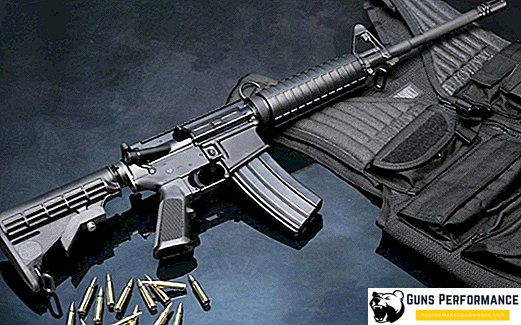
Description of construction
The M16 is a 5.56 mm automatic rifle, the automation of which works by removing powder gases from the barrel. It is locked by turning the bolt.
The difference between the M16 and other models of small arms is that the powder gases enter the vapor pipe and move not the gas piston (as in AK, for example), but the slide frame itself.
Moving back bolt carrier turns the bolt and removes it from engagement with the barrel. At the same time, the spent cartridge is extracted and the return spring is compressed. Then the spring pushes the frame forward, the bolt pulls out the cartridge and sends it to the chamber. After that, the barrel is closed and a shot occurs.
M16 rifle made of aluminum, steel and plastic. The receiver consists of two halves (top and bottom), made of aluminum. They are connected using two pins: front swivel and rear locking. In case of incomplete disassembly of the weapon, the rear pin is squeezed out using any suitable object (the cartridge fits) and the rifle breaks into two parts. After that, the bolt group can be removed and clean the weapon. To complete the assembly you need to move both pins.
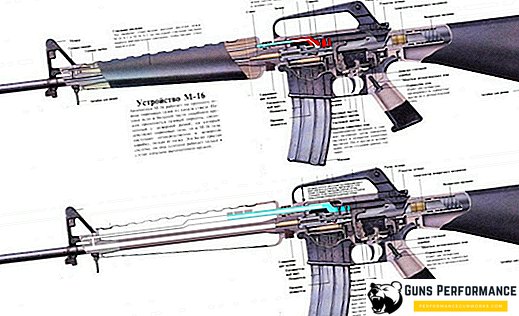
On the right side of the receiver there is a window for ejection of the sleeves, covered with a special lid that opens when the bolt is cocked. Also on this side is the forward assist button, which is used to manually send the shutter. Cocking handle is located above the butt and has a T-shaped.
Shock-trigger udarnikovogo type, it has a fairly simple design. The firing mode switch (also known as the fuse) is located above the pistol grip; for various modifications of the rifle, it has a different number of positions.
The forend and butt of an M16 rifle are made of impact-resistant black plastic. On the first modifications of the rifle, the forearm had a triangular cross section and consisted of two non-interchangeable halves. On the M16A2, the fore-end of the round section consists of two identical parts. In the butt is a compartment for storing supplies for cleaning weapons and care for them.
The sighting devices consist of a round fly, mounted on the base of the gas chamber and a reversing diopter rear sight (range of 250 and 400 meters), located on the carrying handle. The front sight and rear sight can be adjusted. On versions M16A2 and M16A3, a Picatinny bar is installed instead of a handle, on which you can mount various aiming devices. Recently, rifles are often equipped with a collimator or optical sights of small multiplicity.
The rifle is powered from a double-row box magazine. Originally it was an aluminum magazine for 20 rounds, then it was replaced by a steel or aluminum magazine with a capacity of 30 rounds. There are also box magazines for 40 rounds and drum with a capacity of 100-120 rounds.

Myths related to M16
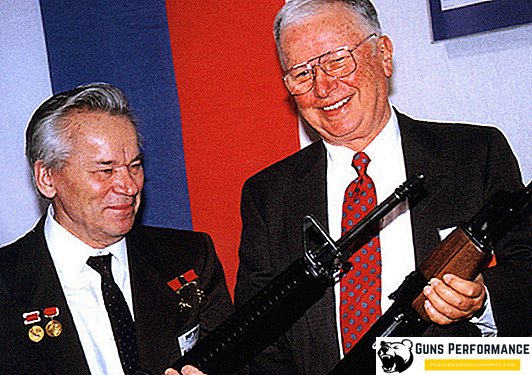
A large number of various myths and tales is associated with this rifle. In this regard, it is not much inferior to the famous AK, only the most legends are negative, which clearly indicates their Soviet and Russian origin. Here are the most popular ones:
- M16 rifle unreliable. The roots of this myth go back to the beginning of the 60s, when the troops received weapons that did not match the samples that passed the tests. The desire to "cut down" more money than it should be, led to frequent delays during the shooting and serious losses among American soldiers. After the chamber and bolt group began to be covered with chromium, and the use of gunpowder in ammunition, the problems, if not completely gone, then decreased to quite acceptable values. Also in the Russian-language literature often found the statement that the M16 must be constantly cleaned, almost every three hundred shots. It is not true. Without cleaning the rifle can make up to 2 thousand shots. By the way, Mikhail Kalashnikov himself put an end to this question, who met with Stoner in the late 80s and highly appreciated his rifle. Famous designers even jointly shot in the dash.
- M16 is difficult to disassemble and clean. This is complete nonsense. For incomplete cleaning in the field, it is enough to squeeze out one pin, break the weapon and remove the bolt group with the handle. And that's all. Then the weapon is ready for inspection and cleaning. The gas pipe does not need regular cleaning.
- The layout of the rifle with a spring in the butt ("linear layout") significantly increases the silhouette of the shooter, which makes it an excellent target for the enemy. Another bike! When shooting while lying with the support of the forearm in the parapet, the silhouette of the arrow increases by only 2 cm (compared to the AK), with the emphasis of the store in the ground, this difference is even smaller. When shooting while standing, this indicator is not considered at all. It should be added that the linear layout of the weapon greatly improves its accuracy.
- M16 is not suitable for melee combat. This is also a very controversial statement: all modifications of the rifle are equipped with a tide for attaching the bayonet, but the butt of the M16 is really less durable than the Kalashnikov assault rifle. A return spring enters it, so when the rifle is destroyed, the rifle becomes unusable. It should be remembered that today hand-to-hand combat is rather an exception than the rule; for such situations, every US Army soldier has a service pistol.
- M16 is a very accurate weapon. This is not entirely true. When conducting a single fire, this rifle shows very good results, the same can be said about shooting with a cut-off of three rounds. But automatic fire accuracy is no different, this is the fault of the high rate of fire.
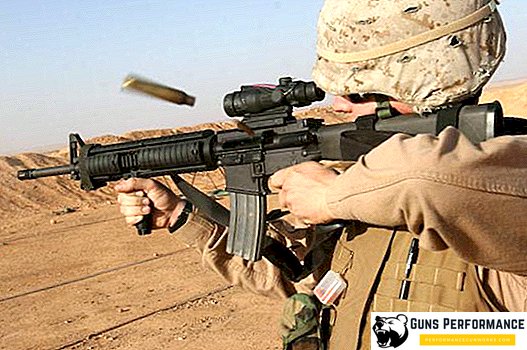
Specifications
| Caliber, mm | 5,56 |
| Initial speed of a bullet, m / s | 990 |
| Weapon length, mm | 991 |
| Rate of fire, rds / min | 850 |
| Ammunition feed | magazine for 20 rounds |
| Cartridge | 5,56×45 |
| Barrel length, mm | 508 |
| Sighting range, m | 500 |
| Effective range, m | 400 |


